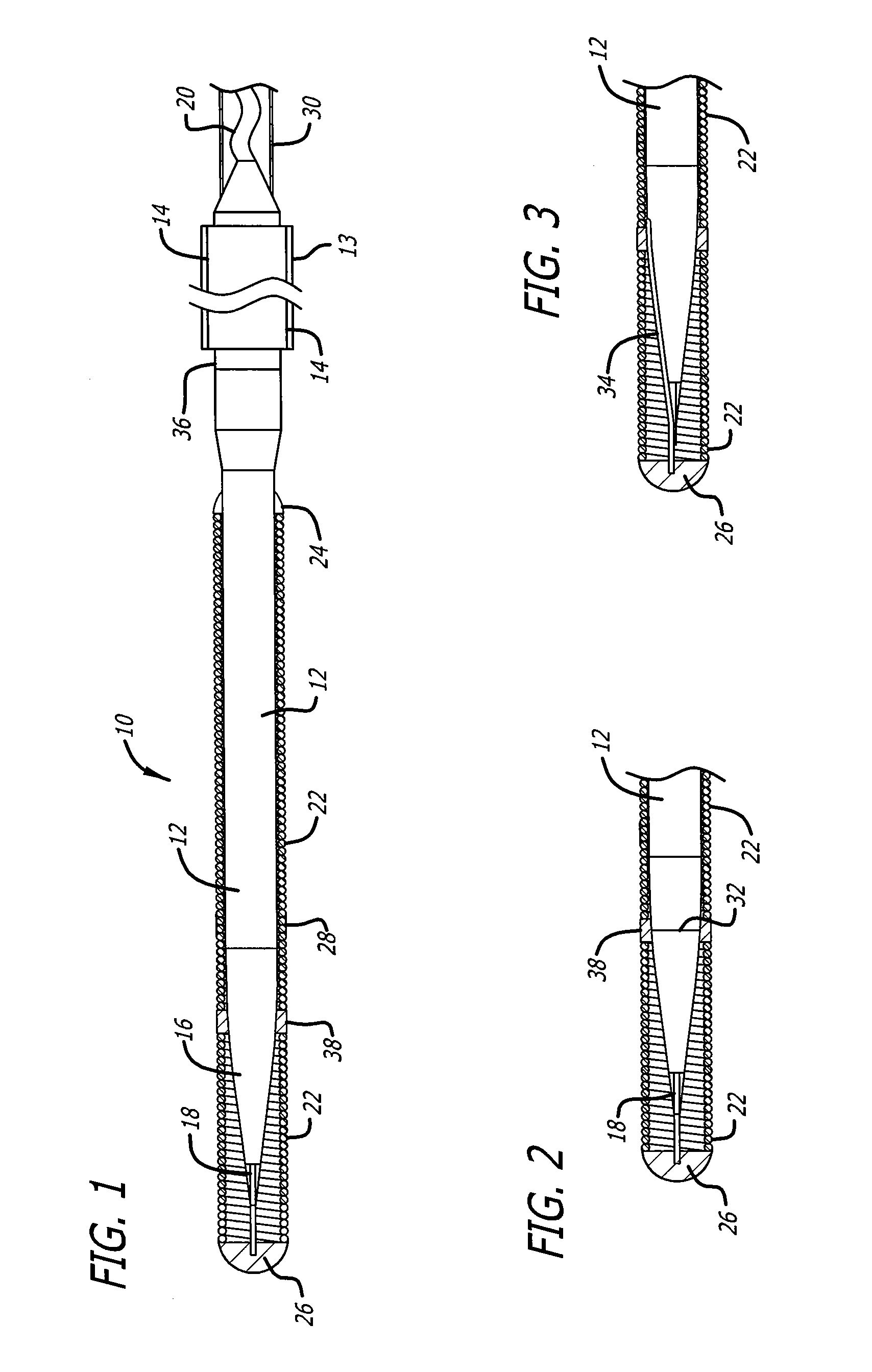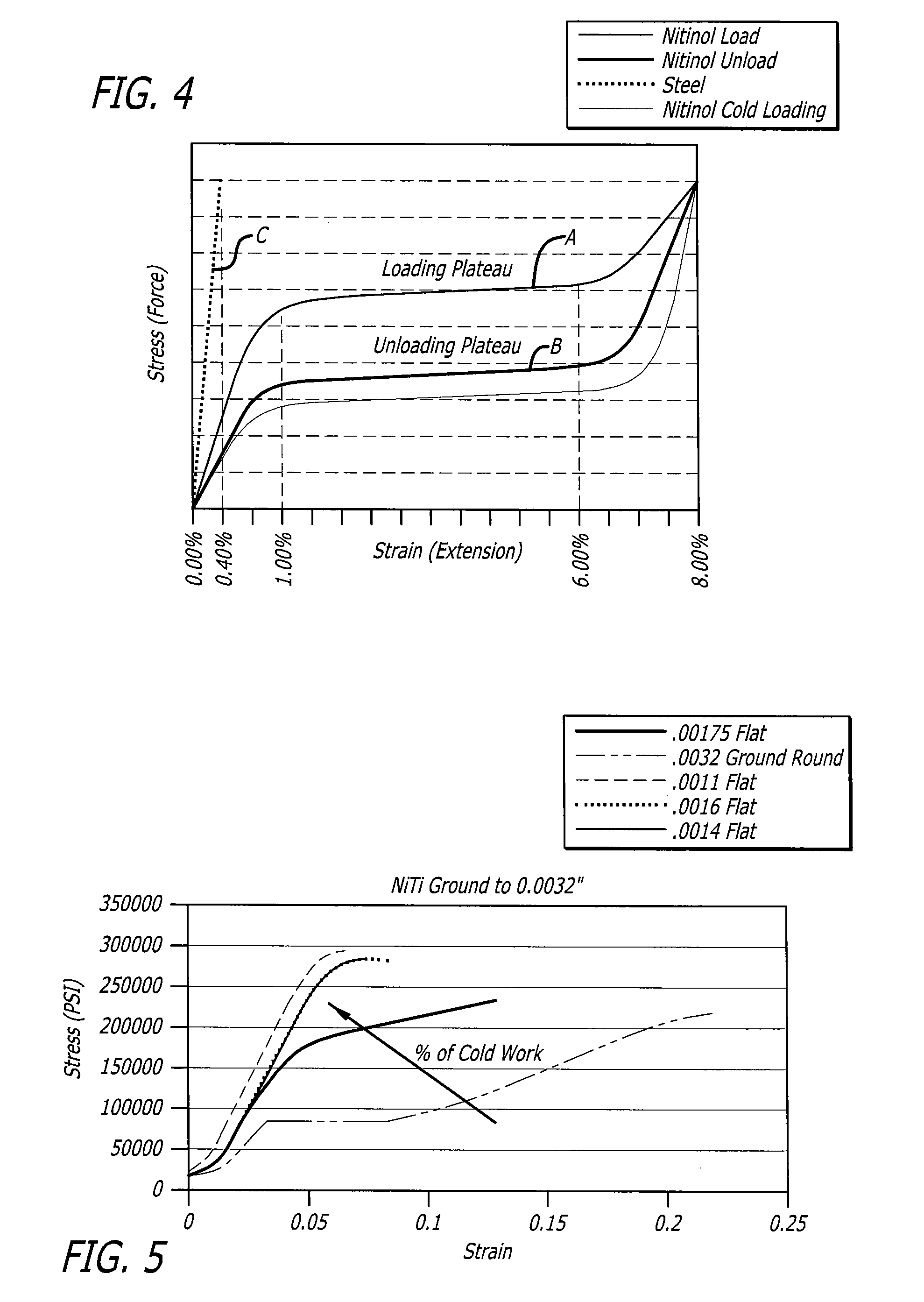Nickel-titanium core guide wire
a technology of nickel-titanium core and guide wire, which is applied in the direction of guide wires, catheters, applications, etc., can solve the problems of cardiac surgeons who may have problems with creating permanent kinks or bends at the distal end, and achieve the effect of reducing or, conveniently imparting permanent kinks or j-shapes
- Summary
- Abstract
- Description
- Claims
- Application Information
AI Technical Summary
Benefits of technology
Problems solved by technology
Method used
Image
Examples
Embodiment Construction
[0021]The present invention in various preferred embodiments is directed to a guide wire for use in a medical procedure. The guide wire is preferably made from an elongated core having a superelastic nickel-titanium alloy section at the distal end. The distal end of the elongated core has a tapered section leading to a shapeable distal tip that is integral with and made from the same material as the nickel-titanium distal core section. As a result, the shapeable tip is also made from superelastic nickel-titanium, but undergoes permanent strain hardening from at least two different radial directions imparting crystallographic texture in those radial directions that limit superelasticity so that permanent deformation can be achieved with only finger pressure. A flexible body is disposed at the distal end and a polymer coating covers at least a portion of the elongated core. The proximal section of the guide wire core may be made from a medical device grade stainless steel or other met...
PUM
| Property | Measurement | Unit |
|---|---|---|
| transverse diameter | aaaaa | aaaaa |
| length | aaaaa | aaaaa |
| length | aaaaa | aaaaa |
Abstract
Description
Claims
Application Information
 Login to View More
Login to View More - R&D
- Intellectual Property
- Life Sciences
- Materials
- Tech Scout
- Unparalleled Data Quality
- Higher Quality Content
- 60% Fewer Hallucinations
Browse by: Latest US Patents, China's latest patents, Technical Efficacy Thesaurus, Application Domain, Technology Topic, Popular Technical Reports.
© 2025 PatSnap. All rights reserved.Legal|Privacy policy|Modern Slavery Act Transparency Statement|Sitemap|About US| Contact US: help@patsnap.com



